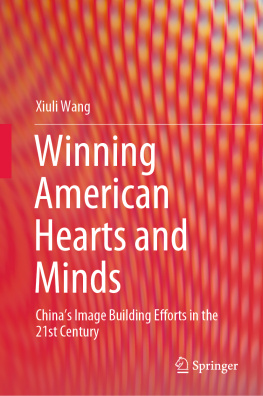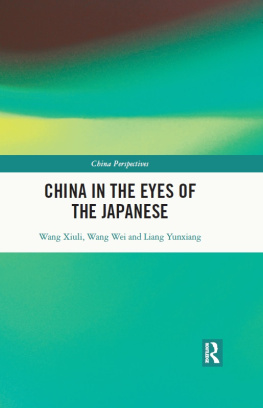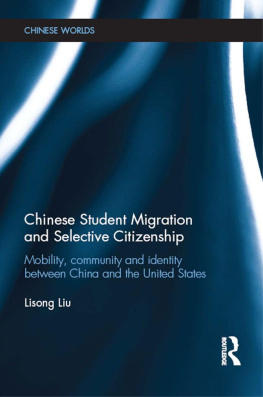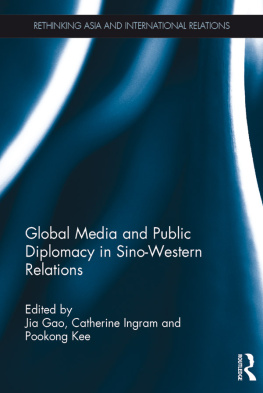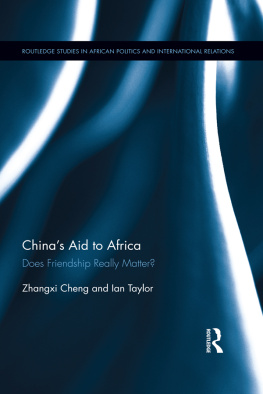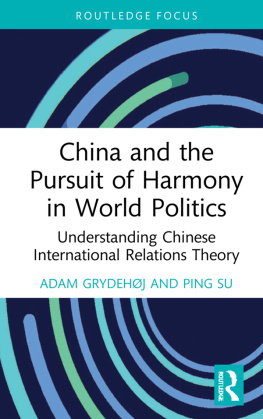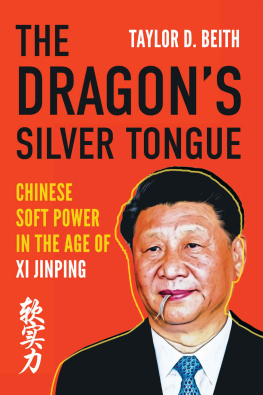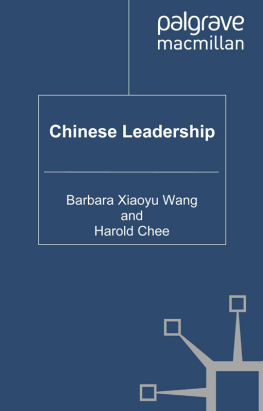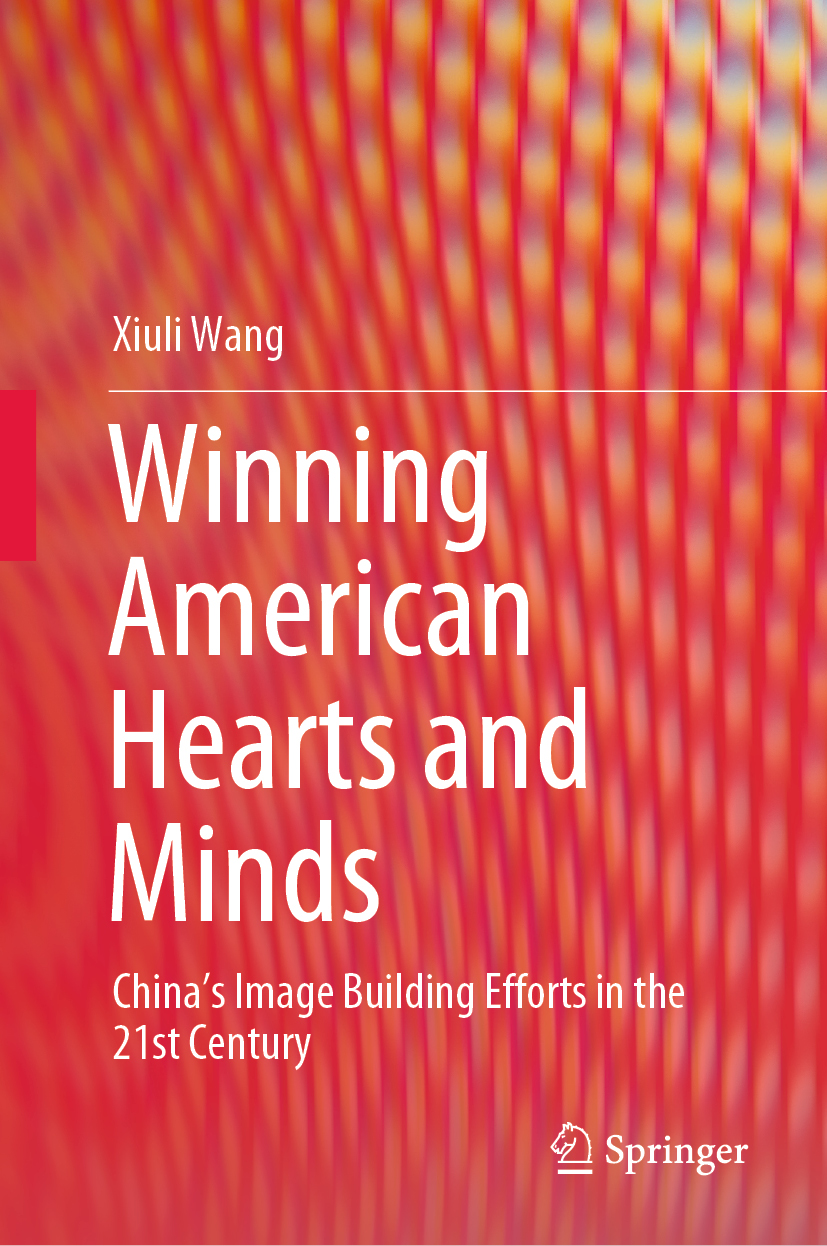Xiuli Wang
Winning American Hearts and Minds
Chinas Image Building Efforts in the 21st Century
Xiuli Wang
School of New Media, Peking University, Haidian District, Beijing, China
ISBN 978-981-15-3183-5 e-ISBN 978-981-15-3184-2
https://doi.org/10.1007/978-981-15-3184-2
Springer Nature Singapore Pte Ltd. 2020
This work is subject to copyright. All rights are reserved by the Publisher, whether the whole or part of the material is concerned, specifically the rights of translation, reprinting, reuse of illustrations, recitation, broadcasting, reproduction on microfilms or in any other physical way, and transmission or information storage and retrieval, electronic adaptation, computer software, or by similar or dissimilar methodology now known or hereafter developed.
The use of general descriptive names, registered names, trademarks, service marks, etc. in this publication does not imply, even in the absence of a specific statement, that such names are exempt from the relevant protective laws and regulations and therefore free for general use.
The publisher, the authors and the editors are safe to assume that the advice and information in this book are believed to be true and accurate at the date of publication. Neither the publisher nor the authors or the editors give a warranty, expressed or implied, with respect to the material contained herein or for any errors or omissions that may have been made. The publisher remains neutral with regard to jurisdictional claims in published maps and institutional affiliations.
This Springer imprint is published by the registered company Springer Nature Singapore Pte Ltd.
The registered company address is: 152 Beach Road, #21-01/04 Gateway East, Singapore 189721, Singapore
Acknowledgements
I would like to express my gratitude to all those people who helped make this book possible. I am very grateful to Pam, my dissertation adviser, who encouraged me to further develop my dissertation topic and publish it as a book. I am also thankful to Prof. Guan Shijie for allowing me to use the survey data from his research project, to Alejandro Romero for his generous support in providing the social media data and analysis, to my research assistants Andy and Yuan for helping me collect literature and data, and to my editor Leana and her colleague Saranya from Springer for their patience and tolerance of my procrastination. My deepest gratitude goes to my friend Anders, who not only helped copy-edit the book, but also offered an abundance of comments and suggestions to improve my work.
Finally, I would like to express my heart-felt gratitude to my family. My parents and sisters have offered tremendous help in taking care of my two kids when I am working on the book manuscript. My husband and kids are very supportive and understanding. Their love and encouragement over the years have motivated me to work hard and to achieve my goals. To my family, with gratitude and love, I dedicate this book.
Contents
Part I The Theoretical Perspective
Part II The Practical Perspective
Springer Nature Singapore Pte Ltd. 2020
X. Wang Winning American Hearts and Minds https://doi.org/10.1007/978-981-15-3184-2_1
1. Introduction
Xiuli Wang
(1)
School of New Media, Peking University, Haidian District, Beijing, China
Abstract
Given that a countrys national image is an important factor in international affairs, countries are paying more attention to use public diplomacy tools to shape their image. This book examines Chinas recent image building efforts, including head of state visits, international broadcasting, social media, education diplomacy, Confucius Institute, international mega events, etc.
In todays era of globalization, with personnel and products flowing among different countries, corporations and governments are paying more attention to their international public images. Studies on global marketing have found that country image plays an important part in consumers evaluation and purchase intention of imported products: a negative image is likely to cause considerable loss of foreign markets, while a positive image is associated with better evaluation and higher intent to purchase (dAstous & Ahmed, ).
More importantly, since public opinion increasingly influences foreign policy, a negative image perceived by the foreign public could lead to adoption of unfavorable policies. That is why public diplomacy, defined as governmental efforts to inform or influence public opinion in other countries in order to reduce misperceptions and promote national interests (Tuch, ), has gained so much attention from scholars, government officials and public relations practitioners.
Together with the emergence and increasing popularity of soft power, a concept developed by Nye () and defined as the ability to win hearts and minds of foreign publics through attraction rather than coercion, various programs targeted at influencing foreign public opinion have been developed through tourism promotion, business expansion, and cultural and educational exchanges in many countries. China is no exception.
Since the Reform and Opening policy began in the late 1970s, Chinas economy has grown rapidly, and the country surpassed Japan as the worlds second largest economy in 2010 (McCurry & Kollewe, ). In order to counter the China threat theory, the Chinese government has made great efforts in the past decades to improve the image of China. This book focuses on Chinas global efforts at image building in the twenty-first century with a special attention paid to the United States, since the US is currently the most powerful nation in the world and Sino-American relations are a matter of great interest.
1.1 Chinas Image-Building Efforts
Image-building is one of the important concepts in public diplomacy. As mentioned earlier, public diplomacy is commonly defined as the cultivation by governments of public opinion in other nations. By cultivating public opinion abroad, countries can more effectively pursue their national interests. Before the twenty-first Century, China either paid no attention to public diplomacy or, when it did, made clumsy attempts that bordered on pure propaganda (Aoyama, ).
Promotion of Chinese culture and language studies is a major component of this public diplomacy, contributing to spreading Chinese culture and increasing Chinas global influence. The Reform and Opening policy since the 1970s has led to growing international interest in Chinese culture, at the same time creating incentives for Chinese leaders to expand the nations culture influence. Since the early 2000s, China has been aggressive in promoting the study of Chinese all over the world. Mirroring cultural associations like the British Council and Spains Cervantes Institute (to name a few), China has established Confucius Institutes and Confucius classrooms worldwide starting from 2004, in an effort to promote both Chinese language and culture. By the end of 2018, 548 Confucius Institutes have been opened with partner foreign universities, alongside 1193 Confucius classrooms based in both primary and secondary schools (Jakhar, ).

